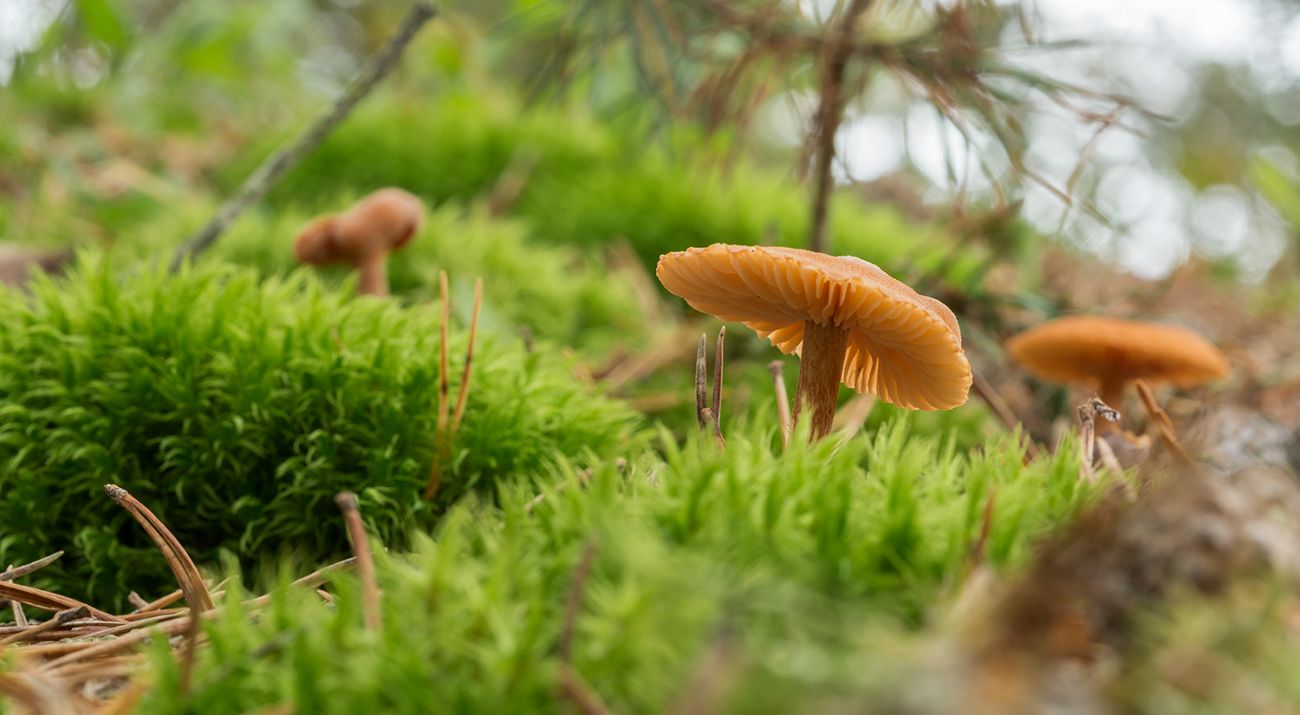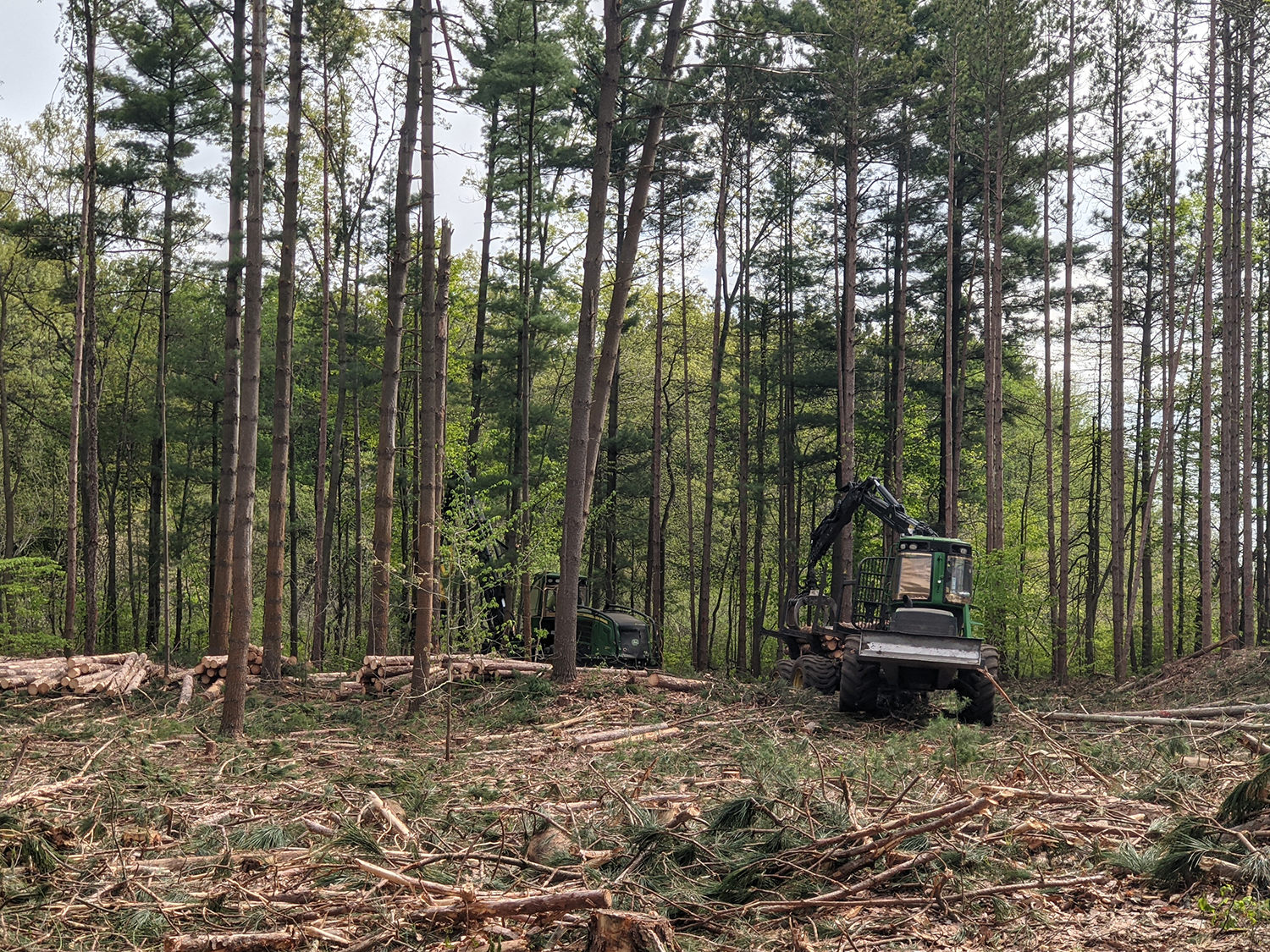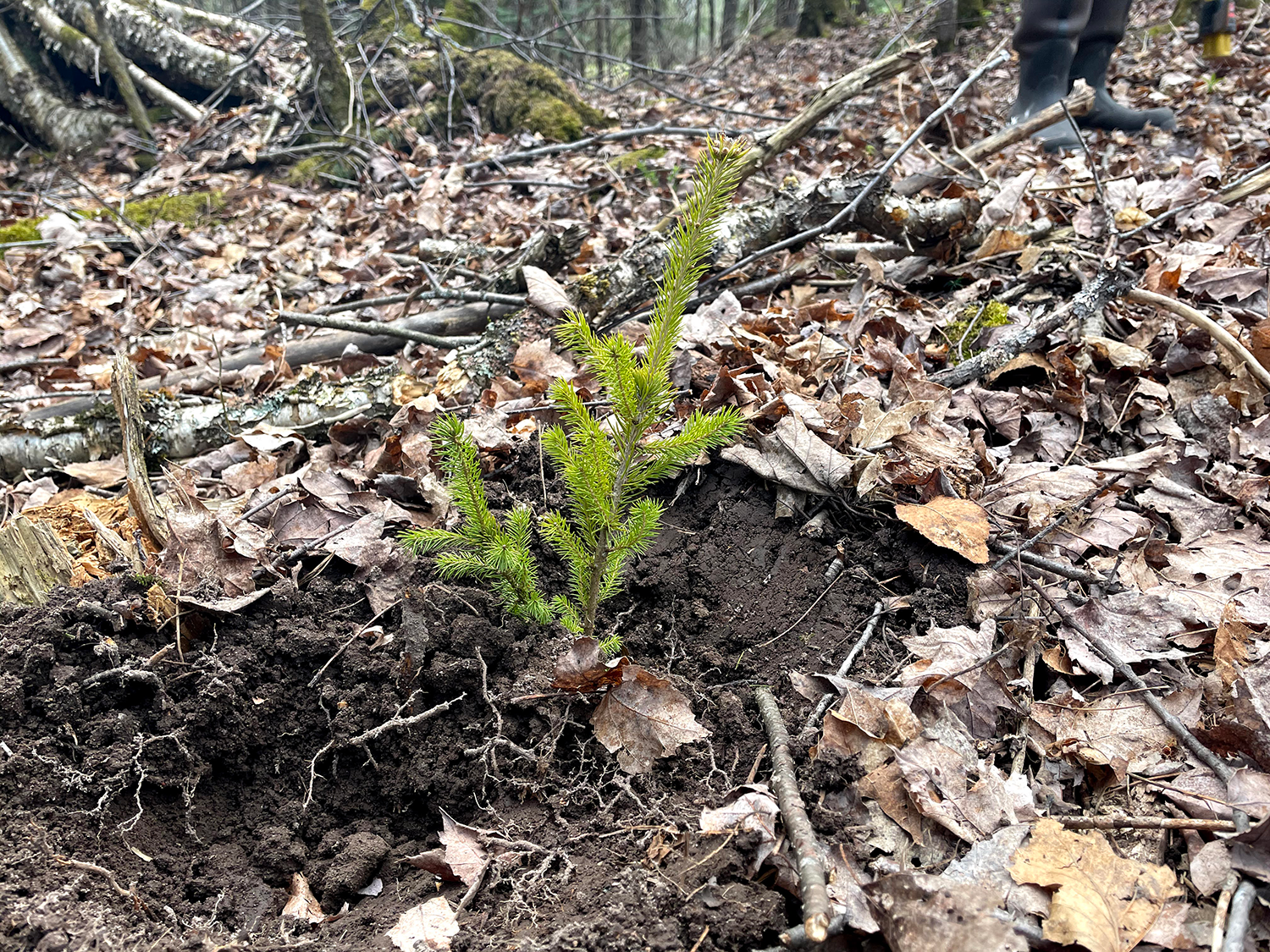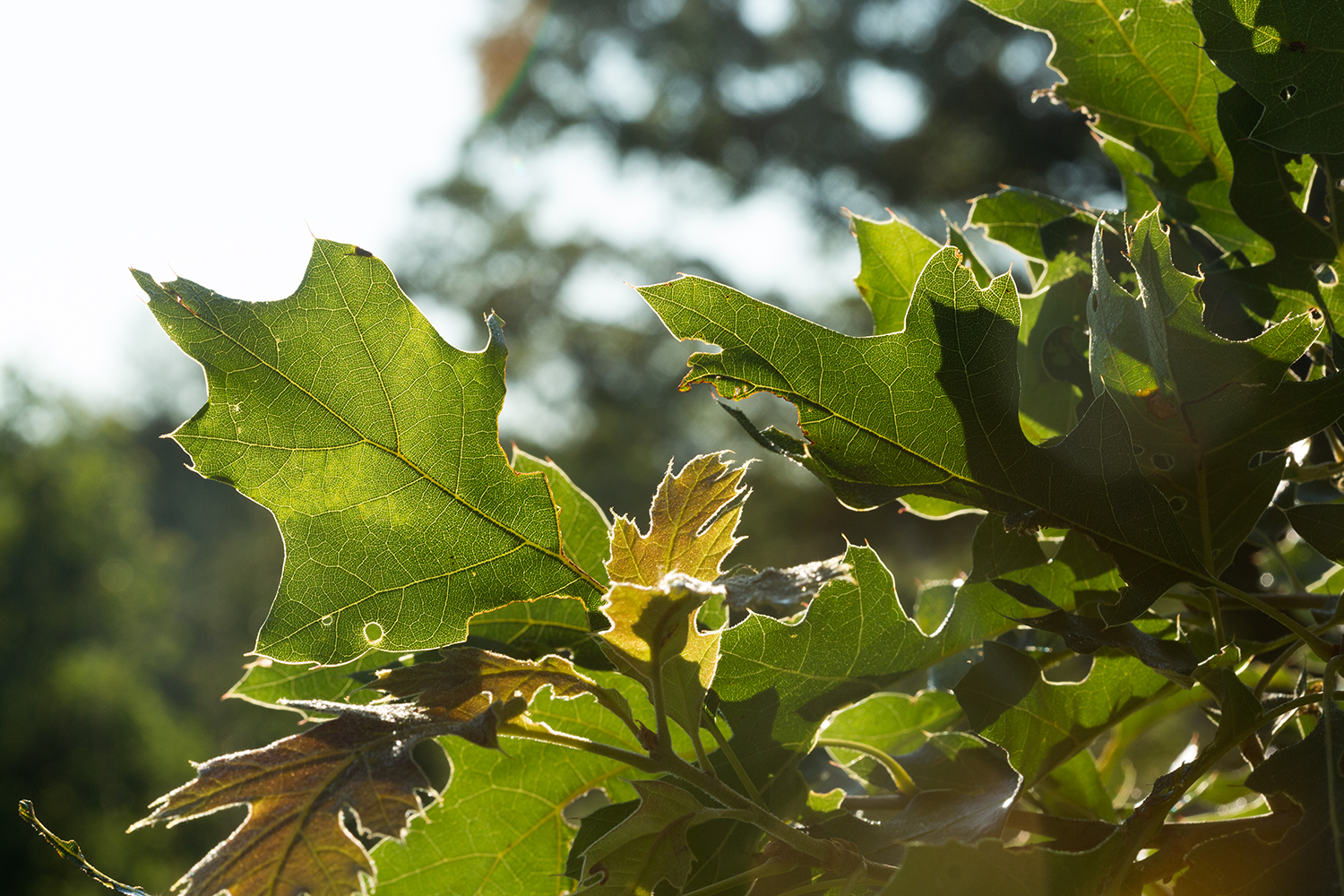Forest Restoration in Action
We're working with partners across the state to help make Michigan forests more diverse, climate-resilient and disease-resistant.
Change isn’t always bad. Sometimes, to restore our forests to their most healthy and resilient condition, we have to rearrange things. Climate change, in the form of pests and drought, puts pressure on Michigan forests. To overcome these threats, we have to focus on restoration efforts.
TNC is taking this climate lens to forest restoration across the state, looking at where and how conservation action can help accelerate the recovery of species diversity and climate resilience in forests formerly managed for timber production.
Behind the Picture
You're on a hike enjoying the crisp forest air when you turn a corner, and bam—you run into a scene just like this.
We know it can be jarring, but sometimes, nature needs our help making some corrections.
Click on the tabs to explore the different reasons why a forest may need restoration.
Dealing with Disease
Through restoration efforts, we can create more diversity in the ages of trees and the species represented in the forest. This helps prevent pests from doing damage that the forest is unable to recover from.
Creating Canopy Gaps
Canopy gaps provide open spaces where under-represented species can regenerate, bringing back more diverse trees for wildlife species that depend on them.
Restoring Diversity
Sometimes, through human intervention, trees end up somewhere they aren't really supposed to be.
Removing these trees allows more diverse species to regenerate in the area. Increased diversity results in increased resilience.
A Real-Life Example: Ross Coastal Plain Marsh
From May to July, TNC removed several stands of red pine on TNC’s Ross Coastal Plain Marsh Preserve in southwest Michigan. The land, totaling 43 acres, had been planted in a monoculture by previous landowners many years ago.
What is a Monoculture?
A monoculture is when a single plant is grown across a specific area of land. In the case of Ross Coastal Plain Marsh Preserve, this plant was red pine.
While red pine occurs naturally in Michigan, the habitat these crowded plantation rows created does not. Their removal will allow the growth of other native species like white pine, beech, oak and sassafras, and a more naturally diverse habitat.
This coming spring, we will accelerate this regeneration by planting 2,300 native trees in the area. Over time, a healthier, more resilient forest will emerge.
This type of restoration effort isn't limited to one preserve. We want forests across the state to be happier, healthier, and better able to tackle climate change.
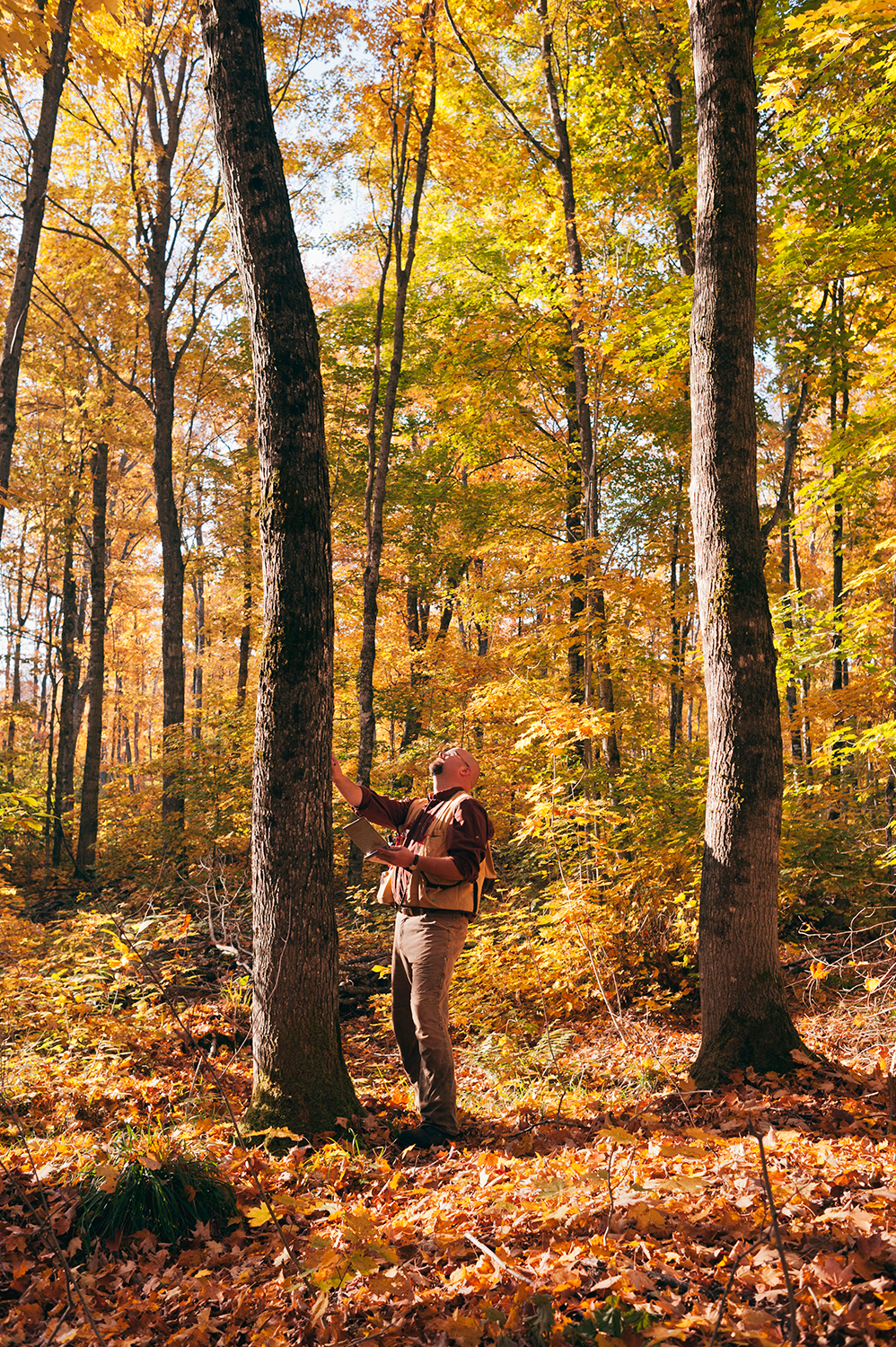
Two Hearted River Forest Reserve
In the last year, TNC has been creating canopy gaps in our 23,000-acre Two Hearted River Forest Reserve, which is dominated by sugar maple. These forests were at one time more diverse, but past timbering practices removed many of the other species.
Canopy gaps provide open spaces where under-represented species can regenerate, bringing back more conifer trees for wildlife species that depend on them—such as snowshoe hare, pine marten and migratory birds.
We gave this process a boost by also underplanting climate-resilient species such as red oak, white spruce and eastern hemlock.
By the Numbers: Two Hearted River Forest Reserve
-
123
acres selectively thinned
-
123
acres underplanted
-
48,000
trees planted over two years
Ottawa National Forest
Through an agreement with the U.S. Forest Service, TNC staff planted white pine, white spruce, tamarack and hemlock along rivers in the Ottawa National Forest this past spring.
This partnership aims to restore forest connectivity, resilience and habitat quality along high-priority Upper Peninsula streams, which are especially vulnerable to habitat loss.
Some of these areas are dominated by ash trees that are threatened by the spread of the emerald ash borer, and planting these additional saplings is important to protect overall forest health.
By the Numbers: Ottawa National Forest
-
68
acres restored
-
19,450
trees planted in the area
-
2.5
river miles covered
Keweenaw Bay Indian Community Lands
In the spring, TNC provided 2,000 northern red oak saplings to the Keweenaw Bay Indian Community.
These were planted in areas where the destructive pest spruce bud worm has killed off balsam fir, white spruce and other trees, to restore the health of these forest stands.
This adds long-lived hardwood species to the forest and improves forage availability for wildlife including black bear, wild turkey and wood duck.
Ready to learn more?
Download our fall newsletter for more updates on TNC's work throughout Michigan.
Start reading